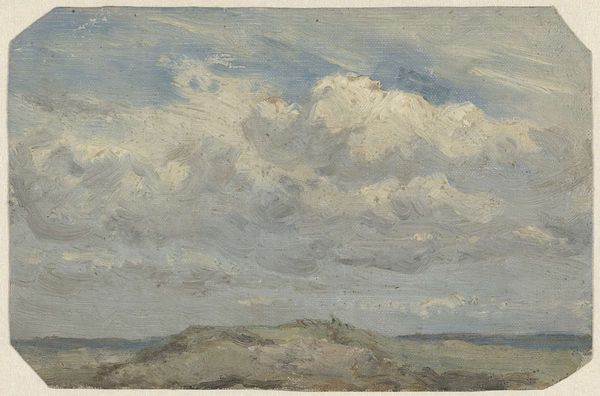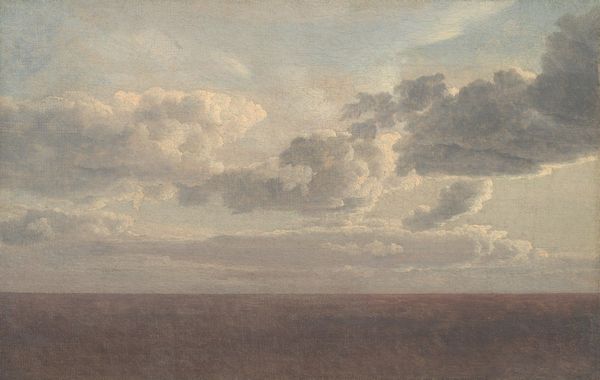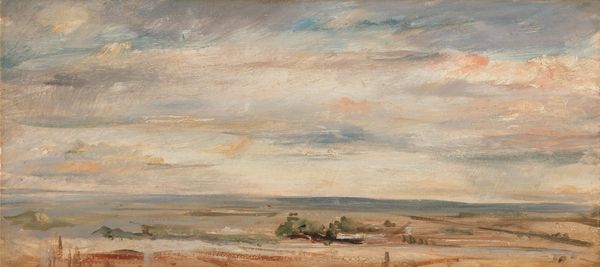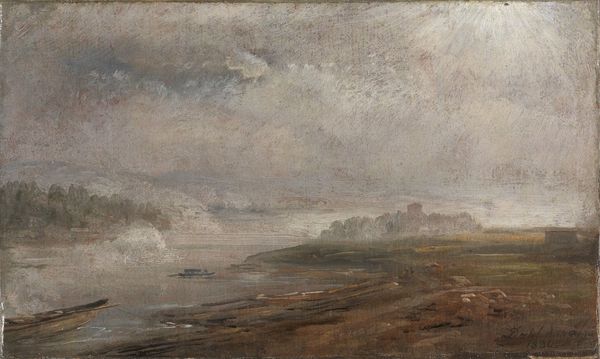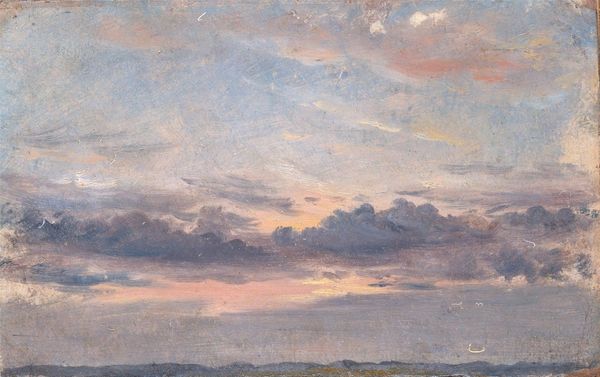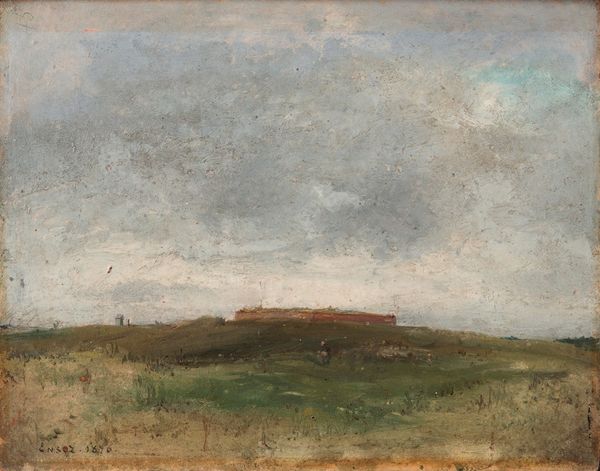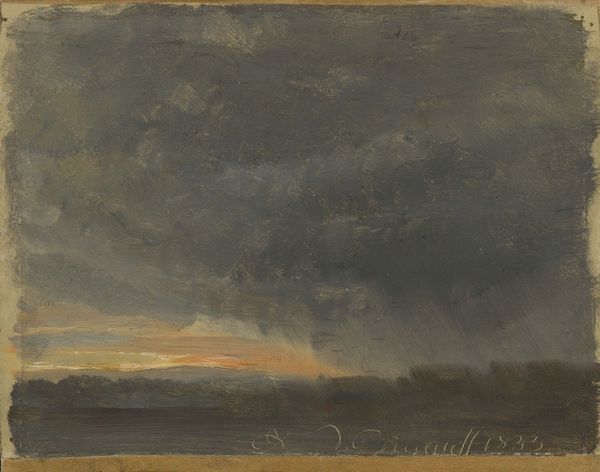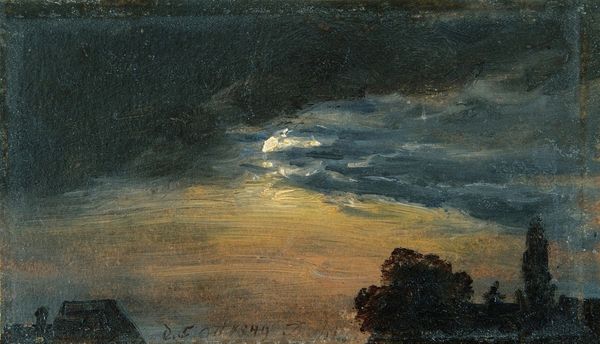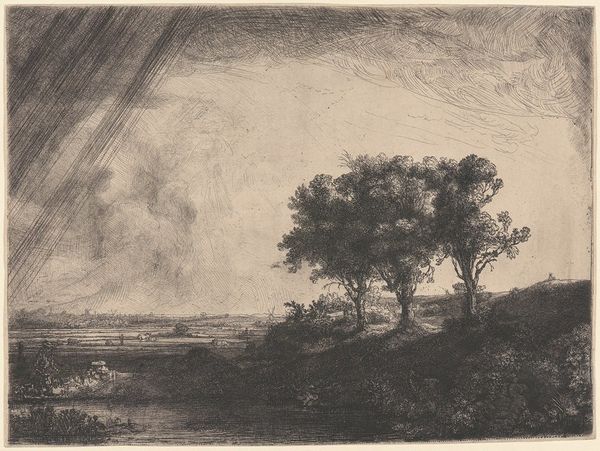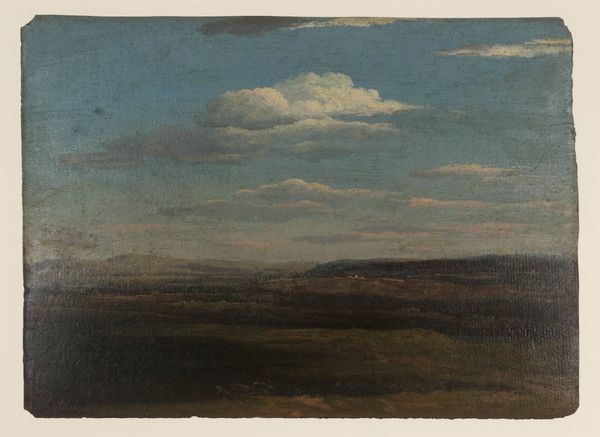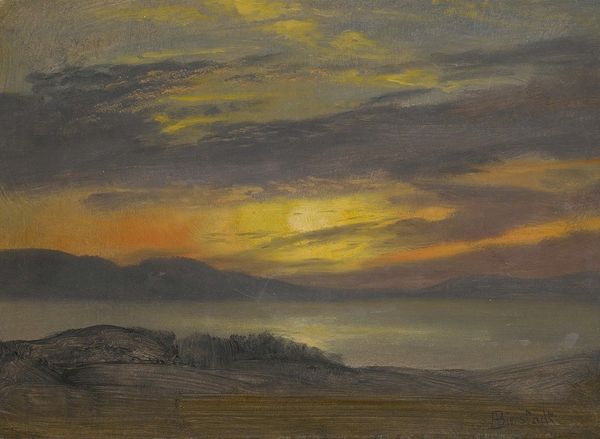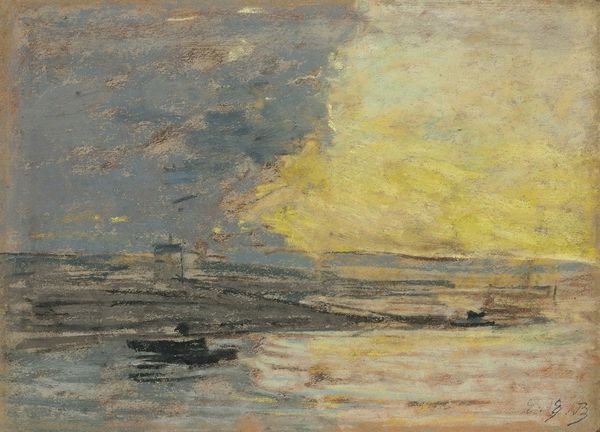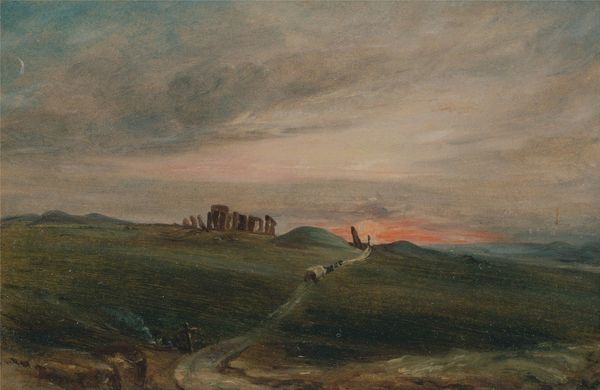
drawing, plein-air, pencil, charcoal
#
drawing
#
plein-air
#
landscape
#
charcoal drawing
#
oil painting
#
romanticism
#
pencil
#
charcoal
Copyright: Public Domain: Artvee
Editor: This is Eugène Delacroix's "Study Of The Frépillon Sky", a landscape drawing done en plein-air with charcoal and pencil. I find the hazy rendering quite captivating; the light feels so transient. What are your initial thoughts? Curator: It’s interesting to see Delacroix, known for his historical paintings, engage with landscape in this way. Given the time and the Romantic movement's emphasis on the individual’s emotional response to nature, how does this study perhaps challenge or reinforce the institutional expectations of artistic subject matter? Was landscape considered a "lesser" genre? Editor: Well, it seems that landscapes were not regarded as highly as history paintings which carried important cultural messages. How does that affect the perception of the drawing at the time it was produced, versus how we value it now in a museum setting? Curator: Exactly! A work like this becomes incredibly important to study because it shows the artist's individual exploration outside of established, often politically charged, subjects. Its shift in value reflects changing priorities within the art world itself: from promoting civic virtues to embracing individual expression and studies of fleeting natural phenomena. How do you think plein-air sketches like this influenced the public's perception of nature? Editor: It might suggest a move from the idealized, staged landscapes to a more direct experience of the world, reflecting, maybe even driving, broader societal shifts. What strikes you most about Delacroix capturing the sky so directly? Curator: For me, the power lies in how it subtly hints at the democratizing potential of art. It removes art from being strictly about the grand narrative, hinting instead at the sublime beauty available to all who look closely. The institutional validation came much later, showcasing how taste itself evolves. Editor: So the act of depicting such an everyday scene eventually made the ordinary an acceptable subject, paving the way for later movements? Curator: Precisely. And acknowledging that slow shift is critical for understanding art's wider role within society, both then and now.
Comments
No comments
Be the first to comment and join the conversation on the ultimate creative platform.
